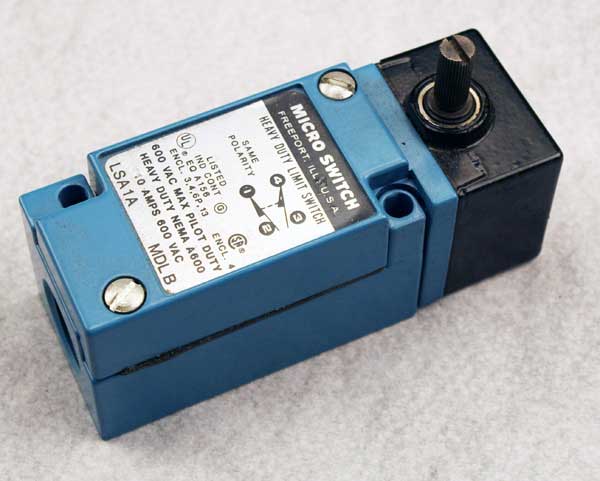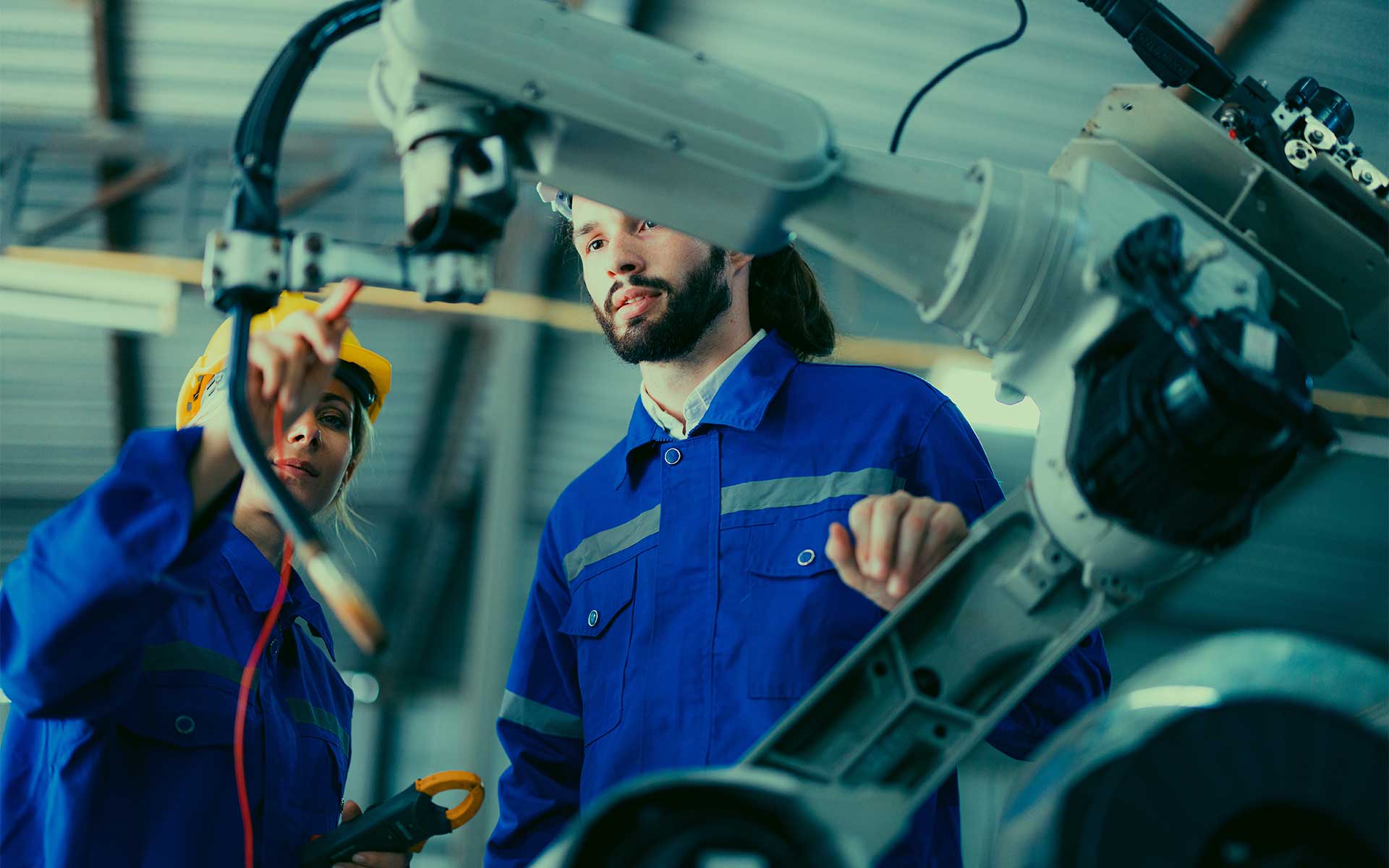Limit switches are essential to modern automation and are commonly used in industrial and manufacturing settings to monitor and control machinery. Today’s post explores limit switches by Honeywell, including their key features, applications, and general installation and maintenance tips to consider. As an authorized stocking distributor of Honeywell limit switches, Peerless Electronics not only carries a wide variety of these durable limit switches but can also provide expert advice on which Honeywell limit switch best fits your specific application.
Understanding the Mechanics of Honeywell Limit Switches
First, let’s get to know limit switches in general. A limit switch is a type of sensor or electromechanical device used to detect the presence or absence of an object or to monitor the position of an object within a defined range. Limit switches are commonly used in industrial and manufacturing settings to monitor and control machinery by providing an effective way to ensure that mechanical components are in the correct position - while also playing a crucial role in maintaining the safety and efficiency of automated processes.
Honeywell limit switches are electrical components that consist of a mechanical actuator and electrical contacts. Mechanically speaking, the fundamental purpose of a limit switch is to act as a binary sensor, providing a signal indicating whether a specific condition (such as the position of an object) has been met. When activated by the presence or movement of said object, the actuator (typically a lever, plunger, or similar mechanism) causes the electrical contacts to either open or close, generating an electrical signal that influences the operation of other electrical components in a system, such as motors (i.e., starting or stopping), solenoids, relays, or other automation devices.


Key Features
Honeywell offers a diverse range of limit switches designed for various industrial applications, including normally open (NO), normally closed (NC), or changeover (both NO and NC) contact configurations. Although the specific features can vary based on the specific model and series, all Honeywell limit switches are well-known for safety, reliability, and more.
Durability and Reliability:
Many Honeywell limit switches are built with rugged and durable materials to withstand harsh industrial environments, including resistance to dust, moisture, and vibrations. This robust design supports the reliable performance of Honeywell switches, including in harsh, hazardous, or corrosive environments. Honeywell's highly durable limit switches are also engineered for long mechanical life, which ensures reliability and durability over an extended period of use.
Versatility:
Honeywell offers a range of durable limit switches for different applications, including those where precise control, reliable position sensing, or safety features are essential for systems operation. For example, Honeywell limit switches are commonly used in manufacturing, automotive, aerospace, and building automation. The application-specific characteristics Honeywell limit switches can provide, like explosion-proof enclosures for hazardous environments, compact designs for tight spaces, or corrosion-resistant materials for challenging conditions, make them particularly suitable for these industries and more.
Safety and Efficiency:
The reliability and versatility of Honeywell limit switches make them integral components in systems where safety and efficiency are paramount. For example, in machinery or manufacturing processes, these efficient industrial switches can be integrated into safety circuits to prevent the operation of certain equipment when specific conditions, such as an open door or improperly positioned components, are detected. Another example is with emergency stop systems. In the event of a critical fault or unsafe condition, the limit switch can trigger an emergency stop, rapidly halting the operation of machinery and preventing potential accidents.
The Peerless Advantage – Your Trusted Electronic Distributor
Peerless Electronics, founded in 1945, is an employee-owned, full-service, authorized stocking distributor for quality electronic parts, including industrial switches and safety switches, from leading manufacturers and suppliers within the military, aerospace, industrial, transportation, and medical sectors. Peerless has been an authorized distributor for Honeywell switches and more since the 1950s, including a complete selection of military and aircraft switches. No distributor has a broader, more diverse Honeywell switch and sensor inventory than Peerless!
Wide Range of Products
Peerless Electronics has been an authorized distributor for Honeywell switches and more since the 1950s, including a complete selection of military and aircraft switches. We offer the full line of Honeywell industrial and safety switches, including toggle switches, limit and basic "micro" switches, snap action, rocker switches, pressure, proximity and humidity sensors, hour meters, and more. No distributor has a broader, more diverse Honeywell switch and sensor inventory than Peerless!
Quality Assurance
Peerless Electronics Inc. is an AS9100 and ISO9001:2015 certified company. We provide a robust Quality System that ensures all products, processes, suppliers, and services adhere to our strict quality standards and meet or exceed every customer's requirements.
Expert Support
Just as quality electronic parts and service are always assured with the Peerless experience, so is comprehensive expert support. With over 50 Value-Added services available, our robust support team is always ready to assist with questions, selection, customization, installation, and troubleshooting. As an employee-owned company, we operate as a team whose sole focus is the satisfaction of our customers.
Applications of Honeywell Limit Switches in Various Industries


Limit switches play a critical role in electronic distribution systems across numerous industries by providing essential input signals that can influence the behavior of electronic components and systems. You can find Honeywell’s durable industrial switches incorporated into the systems of many industries, including manufacturing, aerospace, and automation. Following are examples of how limit switches can be incorporated within each industry.
Manufacturing
Honeywell limit switches are extensively used in manufacturing processes to monitor and control machinery, ensuring that components are in the correct position and that processes operate as intended. For example, the control system of a conveyor belt uses the signal from a limit switch to automate operations based on the position of products on the conveyor, like triggering the start of a robotic arm for packaging when a product reaches a specific point or initiating s sorting mechanism based on the detected position.
Aerospace
Honeywell limit switches play a crucial role in various applications within the aerospace industry, where precise position sensing, control, and safety are paramount. For example, Honeywell limit switches are used in the landing gear systems of aircraft to detect the retraction or extension of landing gear components. This information is crucial for properly stowing or deploying the landing gear during takeoff, flight, and landing.
Automation
In modern automation systems, the electronic distribution of signals from limit switches enables the automation of processes based on the real-time conditions detected by the switches. For example, limit switches are fundamental for accurately sensing the position of mechanical components in automation systems. Whether it's the position of a robotic arm, the movement of a conveyor belt, or the status of a gate, Honeywell’s durable limit switches provide real-time feedback on the position of critical elements within the system.
Choosing the Right Honeywell Limit Switch for Your Needs
Choosing the right Honeywell limit switch for an application involves carefully considering various factors.
Considerations
When selecting the appropriate Honeywell limit switch for a specific application, several critical factors must be considered to ensure optimal performance and longevity. One of the primary considerations is the environmental conditions in which the switch will operate, as different Honeywell limit switches are designed to withstand varying environmental challenges, including temperature extremes, humidity, dust, and exposure to chemicals. Therefore, assessing the environmental factors of the application helps determine the necessary level of protection and durability required for the switch.
The type and magnitude of the load that the limit switch will control also factor into the selection process. Understanding the electrical and mechanical characteristics of the load, such as voltage, current, and power ratings, will ensure the selected limit switch can handle the specific demands of the application. Additionally, the switching mechanism, whether it is a normally open (NO), normally closed (NC), or changeover configuration, should align with the system's desired functionality and control requirements.
Next, evaluating the available space, installation location, and any physical constraints in the surrounding environment will help determine which limit switch mechanical design is appropriate, including the type of actuator (lever, roller, plunger) and the actuation method.
Finally, adherence to industry standards and certifications is crucial, especially in applications where safety and regulatory compliance are paramount. Honeywell provides limit switches with various certifications to meet specific industry standards, ensuring that the selected switch aligns with the necessary safety protocols.
Consult with Experts
We’re here to help. If you encounter challenges or need clarification on certain aspects of limit switch selection, installation, or maintenance, consult the limit switch experts at Peerless Electronics for guidance or technical support.
Installation and Maintenance Tips
Installing Honeywell Limit Switches involves several steps to ensure a safe and effective integration into your electronic distribution system. Following is a general ten-step guide to help you with the installation process.
Installation Guide
Step one: Review Product Documentation
Begin by thoroughly reviewing the product documentation provided by Honeywell, which includes important information about the switch's specifications, wiring diagrams, and installation guidelines.
Step Two: Take Safety Precautions
Before starting the installation, ensure that the power to the system is turned off. Also, follow all safety guidelines and precautions outlined in the product documentation and any relevant industry standards.
Step Three: Select the Mounting Location
Next, identify and select an appropriate mounting location for the limit switch. Consider factors such as the application requirements, accessibility, and environmental conditions. Ensure that the chosen location allows for proper actuation of the switch based on the intended purpose.
Step Four: Mount the Switch
Depending on the model, mount the limit switch securely using the designated mounting holes or brackets. Follow the recommended torque specifications to avoid damage to the switch housing.
Step Five: Adjust Actuator Position
If the limit switch has an adjustable actuator, set its position to ensure accurate and reliable operation. Refer to the product documentation for guidance on adjusting the actuator.
Step Six: Wiring Connection
Connect the wiring to the limit switch terminals based on the electrical configuration required for your application. During this step, following the wiring diagrams provided in the documentation is essential to ensure the correct polarity and proper connection to the control system.
Step Seven: Seal and Protect
If the installation environment exposes the limit switch to dust, moisture, or other contaminants, use appropriate sealing methods or accessories to protect the switch and maintain its reliability.
Step Eight: Conduct Functional Tests
After completing the installation, conduct functional tests to verify that the limit switch operates as intended. Test the switch under normal operating conditions and simulate all relevant scenarios to ensure proper response.
Step Nine: Integration with Control System
Integrate the limit switch into the overall control system as required. Ensure that the switch's signals are properly interfaced with other components, such as programmable logic controllers (PLCs) or other automation devices.
Step Ten: Document the Installation
Document the installation details, including the switch's serial number, installation date, and any specific adjustments made. Keep this information for future reference and maintenance purposes.


Maintenance Practices
Maintenance is critical to the efficiency and reliability of limit switches. Therefore, we recommend implementing a routine inspection schedule to check for signs of wear, damage, or misalignment. While conducting these follow-up inspections, perform all maintenance tasks as recommended in the product documentation to prevent issues before they occur.
If you encounter challenges or have specific questions while installing Honeywell limit switches, contact Peerless Electronics for help. Our experts can provide the technical support or consulting necessary for successful installation.
Get in Touch with Peerless Electronics
Shopping Peerless Electronics for Honeywell limit switches and other quality electronic parts is seamless, whether online or in person. As authorized stocking distributors of Honeywell, we have the largest, most diverse switch and sensor inventory available. Plus, every Peerless Electronics purchase is backed by our extensive Quality System protocols, including custom-tailored technical support and over 50 other value-added services.





